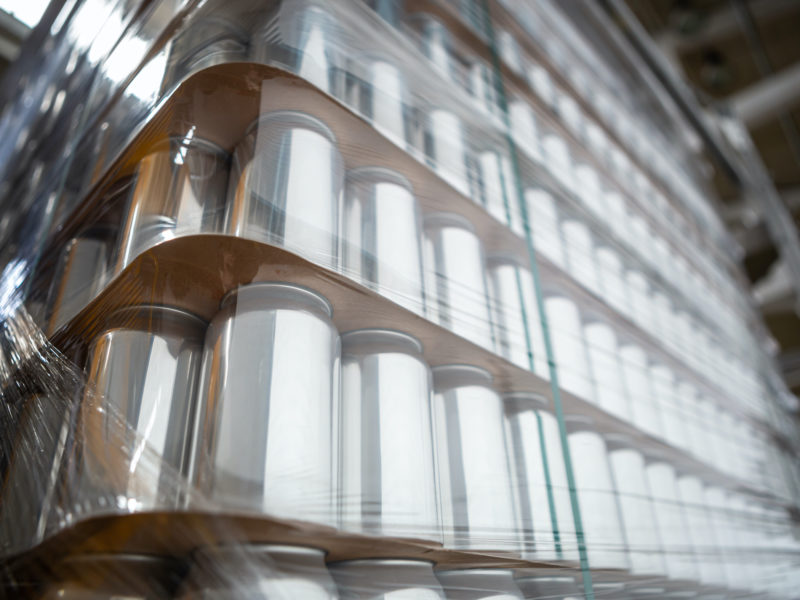
Robotic palletizing systems: how manufacturing companies dealt with the pandemic emergency
The global impact of the COVID-19 pandemic has been staggering and unprecedented. The major health and economic crisis that brought the entire planet to its knees forced industries around the world to reinvent themselves and to revolutionize their production chain, and this is where robotic palletizing systems and the whole world of industrial automation come in.
An automated palletizing robot enables products and packages of different shapes and sizes to be aligned and organized on pallets, then packed and stored or transported safely to their destination. Equipped with a mechanical arm to move the goods and tailored to the specific needs of each customer, an automated palletizing robot offers an extremely flexible and customizable service.
But how can palletizing systems become the trump card for manufacturing industries, even in difficult times like a health emergency? According to a recent Forbes survey of 450 CEOs, robotic palletizing systems and more generally all industrial automation processes have been the real key to dealing with the pandemic situation within companies.
Automated palletizing to guarantee continuity on the line
The spread of COVID-19 and the ongoing pandemic situation have put manufacturing companies across the globe under tremendous strain and, as is often the case, the crisis has brought with it a number of changes that we will have to live with for a long time, if not forever. At manufacturing sites, companies have been forced to stop production and change procedures to ensure the safety of their workers. The health emergency has thus spurred the adoption of new automation tools and systems, while companies have entered a new phase of life characterized by safer, more productive, and more resilient operations.
At a time when contact between multiple people has become a health hazard and remote working is becoming increasingly imperative, driving productivity remotely is possible thanks to automation systems such as robotic palletizing systems, which are already seen as the key to achieving leading positions once we reach the post-pandemic phase.
The adoption of an automated palletizing robot enabled many manufacturers to ensure production line continuity even during the most difficult periods of pandemic management, while still managing to maintain social distancing and without having to halt production. In fact, robotic palletizing systems do not require the presence of an operator, and this had a positive effect on demand during the pandemic, even in anticipation of a potentially much longer period of duration than that of an isolated emergency.

The COVID-19 crisis triggered a dramatic increase in demand for pharmaceutical products, with the consequent need to eliminate margins of error and tighten all the deadlines associated with the product supply chain. In this context, which subsequently extended to the food and automotive sectors, along with many other industries, an automated palletizing robotwas able to make the difference and contribute to the survival and success of many companies, increasing the speed of packaging processes and reducing the time taken to ship goods.
These are the reasons that have driven and are still driving many manufacturers to invest more and more in robotic palletizing systems, in the direction of an industry increasingly oriented towards HMI technologies, increasing production and reducing downtime to the minimum.
What lies ahead in the post-pandemic phase?
The response to the COVID-19 emergency accelerated the digital transformation of many manufacturing environments, as the crisis has also been the driving force behind companies changing their organization and working methods to limit contact between employees, thus triggering the need for more advanced and high-performance machinery. For example, with an automated palletizing robot, there is no longer the need for several employees to handle each pallet, but a single individual responsible for its entire journey.
But that’s not all. The adoption of robotic palletizing systems makes it possible to cut labor costs and to achieve greater independence in the event of employees being absent from work due to illness or refusal to work in conditions of health risk. In addition, with these automated systems it is possible to drastically cut warehousing costs: sales (and consequently profits) can immediately follow the production phase without passing through the warehouse, as tools are available to pack and load goods onto trucks as they are produced.
The transition from a Production – Palletizing – Warehousing model to a Production – Palletizing – Shipping and sales model has already begun.




